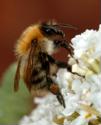I wanted to look for a bee removal company near me because I had an issue with bees on my property. They ended up building a nest in my back yard and I didn’t want my family and I to get stung. So, we hired a good company to help us out.
The first thing I did was search for bee removal companies in my area. I went to a search engine website and then I searched for bee removal in the name of my city. When I got results, I made note of the ones that were in my area and looked like they fit the bill. I made sure that I put together a list of more than one company so I could compare different services. Hiring someone at random is just not something I do when it comes to getting any kind of a service to help me.
The key for me was finding a bee removal company with the best reputation. I also wanted to work with a company that was able to do the work for a fair price. The first thing I did when I had the names of some companies written down was look up reviews on each of them. I tried to find more than one review on each of the bee removal services out there so I could learn more about what experiences people had with the company. Also, I called around and asked for pricing so I could learn what people were charging on average in my area for bee removal assistance.
Now you know how I found a bee removal company near me. It didn’t take too long for me to find what I needed in the world of bee removal. There are plenty of options and I hope that I have helped people to find good services with my advice.…


 Researchers from INTA have devised a new tool for the management of insects in fruit trees. The use of this natural enemy allows reducing the number of applications of insecticides.
Researchers from INTA have devised a new tool for the management of insects in fruit trees. The use of this natural enemy allows reducing the number of applications of insecticides.